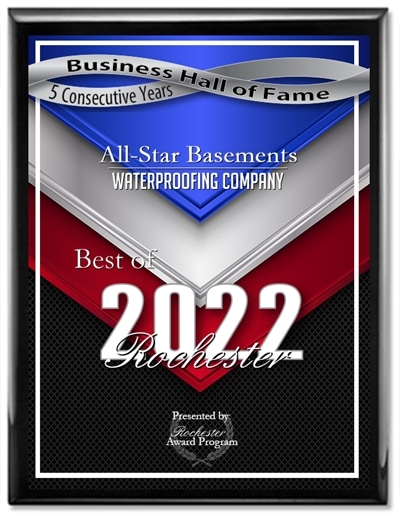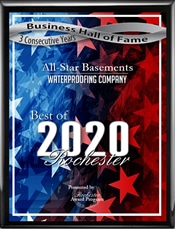
A stable and robust foundation is the cornerstone of any building’s structural integrity. Over time, foundations may encounter issues due to factors like soil movement, water damage, and improper construction practices. Professionals employ various foundation repair techniques to address these issues and ensure long-term stability. This article delves into comprehensive foundation repair techniques, detailing their applications, benefits, and the procedures involved in each method.
Common Foundation Problems
Understanding the common foundation problems is the first step in addressing them effectively. These problems include:
- Settling and Sinking: Often caused by soil movement, water infiltration, or poor compaction, leading to uneven foundation settlement.

- Cracks: Can appear due to thermal expansion, settling, or structural overload, affecting walls, floors, or the foundation itself.
- Bowing and Bulging: Result from lateral soil pressure, causing foundation walls to bow or bulge inward.
- Water Damage: Excess moisture can weaken the foundation, leading to issues such as mold growth and erosion.
- Soil-Related Issues: Expansive clay soils and inadequate drainage can cause significant foundation movement and damage.
Steel Push Piers
Steel push piers are a reliable solution for stabilizing and lifting foundations. These piers are driven deep into the ground until they reach load-bearing soil or bedrock, providing solid support for the foundation.
Applications:
- Stabilizing sinking or settling foundations
- Lifting foundations to their original position
Benefits:
- Suitable for various soil conditions
- Provides immediate stabilization
- Minimal disruption to the property
Steps Involved:
- Site Assessment: Evaluating the foundation and soil conditions.
- Excavation: Digging small holes around the foundation to access the footing.
- Installation: Driving steel piers into the ground using hydraulic equipment.
- Attachment: Connecting the piers to the foundation using brackets.
- Lifting: Using hydraulic jacks to lift the foundation to its original position.
- Backfilling: Filling the holes and restoring the site.
Helical Piers
Helical piers, consisting of steel shafts with helical plates, are screwed into the ground to provide support to the foundation. They are ideal for applications where traditional concrete piers are not feasible.
Applications:
- Stabilizing and lifting foundations
- Supporting new construction on unstable soil
Benefits:
- Can be installed in a variety of soil conditions
- Immediate load-bearing capacity
- Minimal disturbance to the surrounding area
Steps Involved:
- Site Assessment: Thorough evaluation of the foundation and soil conditions.
- Installation: Screwing helical piers into the ground using hydraulic equipment until stable soil is reached.
- Attachment: Connecting the piers to the foundation with brackets.
- Lifting: Lifting the foundation, if necessary, using hydraulic jacks.
- Final Adjustments: Securing the piers for long-term stability.
Slabjacking (Mudjacking)
Slabjacking is a technique used to lift and level concrete slabs that have settled or become uneven. It involves injecting a grout mixture beneath the slab to raise it to its original position.
Applications:
- Lifting sunken concrete slabs, such as driveways, sidewalks, and garage floors
- Leveling uneven floors
Benefits:
- Cost-effective compared to replacement
- Quick and minimally invasive
- Provides immediate results
Steps Involved:
- Site Assessment: Evaluating the area to be repaired to determine the extent of settling.
- Drilling: Drilling small holes into the concrete slab.
- Injection: Pumping a grout mixture through the holes to fill voids and lift the slab.
- Sealing: Seal the holes with concrete and clean the site.
- Final Adjustments: Check the slab for levelness and make any necessary adjustments.
Polyurethane Foam Injection
Polyurethane foam injection is a modern alternative to slabjacking. This method involves injecting high-density polyurethane foam beneath the concrete slab to lift and stabilize it.
Applications:
- Lifting and leveling concrete slabs
- Filling voids and stabilizing soil
Benefits:
- Quick and minimally invasive
- Lightweight and strong
- Water-resistant, preventing future soil erosion
Steps Involved:
- Site Assessment: Evaluating the area to be repaired.
- Drilling: Drilling small holes into the concrete slab.
- Injection: Injecting polyurethane foam through the holes, allowing it to expand and lift the slab.
- Sealing: Sealing the holes and cleaning the site.
- Final Adjustments: Checking the slab for levelness and making any necessary adjustments.
Carbon Fiber Reinforcement
Carbon fiber reinforcement is used to strengthen and stabilize foundation walls that are cracking, bowing, or bulging. Carbon fiber strips provide additional support and prevent further movement.
Applications:
- Stabilizing cracked or bowing foundation walls
- Preventing further wall movement
Benefits:
- High strength-to-weight ratio
- Non-intrusive and quick installation
- Long-lasting and durable
Steps Involved:
- Site Assessment: Evaluating the condition of the foundation wall.
- Surface Preparation: Cleaning and preparing the wall surface.
- Application: Applying epoxy resin to the wall and pressing carbon fiber strips into place.
- Curing: Allowing the epoxy resin to cure, bonding the carbon fiber strips to the wall.
- Final Adjustments: Inspecting the wall for stability and making any necessary adjustments.
Underpinning
Underpinning is a technique used to strengthen and stabilize the foundation of an existing building. It involves extending the foundation to a deeper, more stable soil layer.
Applications:
- Strengthening foundations that have become unstable
- Supporting additional loads from building modifications or extensions
Benefits:
- Provides permanent stabilization
- Increases the load-bearing capacity of the foundation
- Suitable for various soil conditions
Steps Involved:
- Site Assessment: Evaluating the foundation and soil conditions.
- Excavation: Digging holes or trenches around the foundation to expose the footing.
- Installation: Extending the foundation to deeper, more stable soil layers using concrete or steel piers.
- Backfilling: Filling the holes or trenches and restoring the site.
- Final Adjustments: Ensuring the foundation is stable and making any necessary adjustments.
Drainage Solutions
Proper drainage is essential for preventing water damage to foundations. Professional drainage solutions can address issues such as water accumulation around the foundation and hydrostatic pressure.
Applications:
- Preventing water damage to foundations
- Reducing hydrostatic pressure on foundation walls
Benefits:
- Prevents foundation damage caused by water

- Improves the overall stability of the structure
- Can be combined with other repair techniques for comprehensive solutions
Steps Involved:
- Site Assessment: Evaluating the site to identify drainage issues.
- Installation: Installing drainage systems, such as French drains, sump pumps, or exterior waterproofing membranes.
- Connection: Connecting the drainage systems to ensure proper water flow away from the foundation.
- Testing: Testing the drainage systems to ensure they are functioning correctly.
- Final Adjustments: Making any necessary adjustments to optimize the drainage system.
Professional foundation repair techniques are essential for maintaining the structural integrity and safety of buildings. Methods such as steel push piers, helical piers, slabjacking, polyurethane foam injection, carbon fiber reinforcement, underpinning, and drainage solutions offer effective ways to address a wide range of foundation issues. By understanding these techniques and their applications, professionals can provide reliable and long-lasting solutions to foundation problems, ensuring the longevity and stability of the structures they work on.
Contact the Professionals at All-Star Basements Today! 507-259-7776

All-Star Basements is Locally Owned and Operated and based out of Rochester, Minnesota. We cover Southern Minnesota including the Twin Cities area, Western Wisconsin and parts of Northeast Iowa. Our team is committed to solving our customers’ basement waterproofing, foundation repair, or crawl space needs and offering multiple solutions to choose from.
As a proud member of the Basement Health Association and the National Waterproof Members of America, we have the best products available to solve your leaky basement, seepage, or flooding issues. Our lineup also includes multiple crawl space solutions.
If you have foundation problems that need any kind of repair, we can help! We feature the nationally renowned Grip-Tite Foundation Systems, which has a long history over 90 years of fixing homeowners’ foundation repair issues- from walls that are buckled, tipping or cracked and bowing.
At All-Star Basements, we are committed to providing multiple solutions to choose from to help fix any basement problem you may have. We are very proud of our Better Business Bureau A+ rating and take great pride in caring for all of our customers’ needs- big or small, we do it all!














